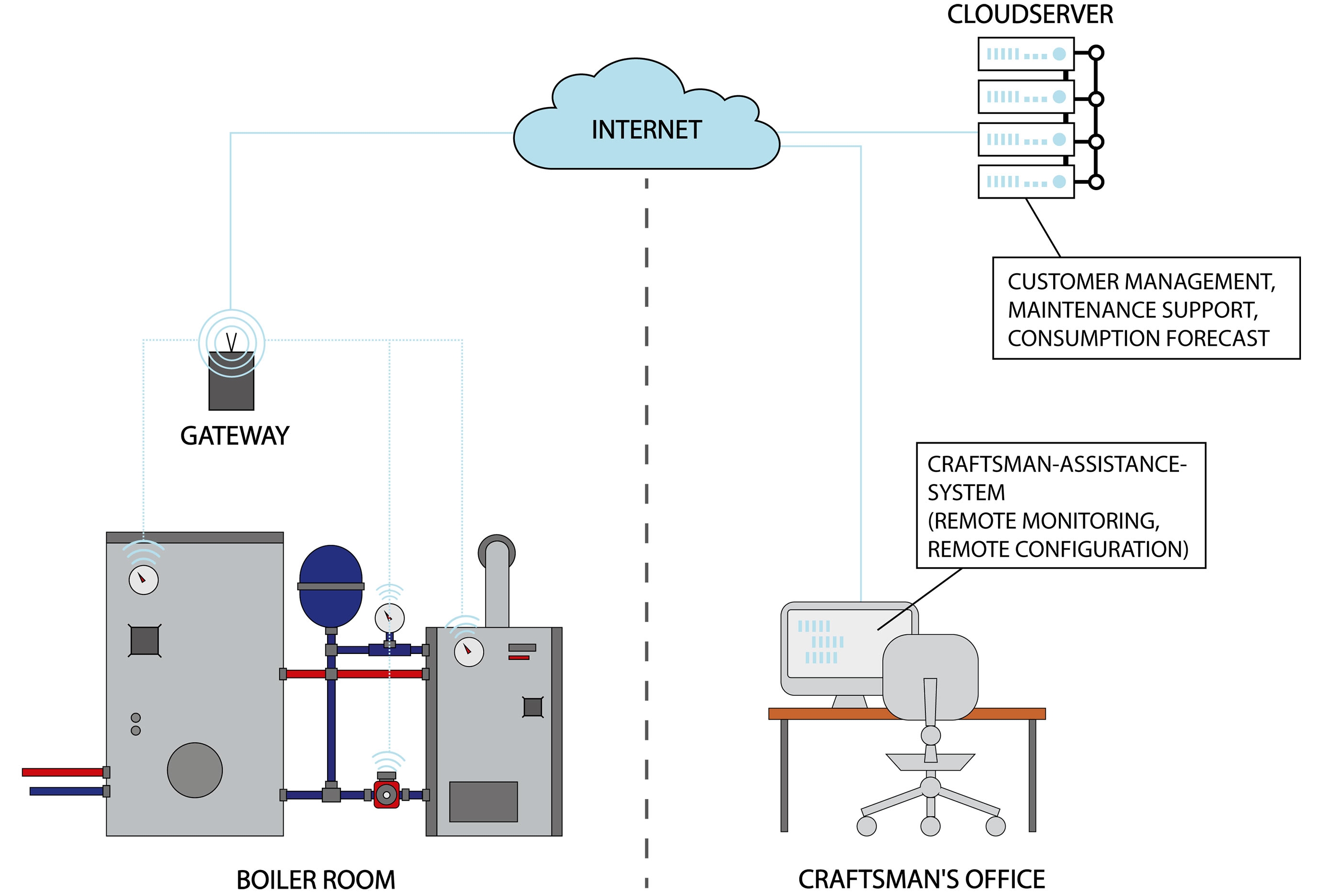Sensor Connection for Teleservices
Modern technical systems in industry, in infrastructure, in buildings (e.g. heating systems) or on construction sites are usually equipped with sensors, and in some cases also actuators, that allow remote access for maintenance or diagnostic purposes via the Internet. This has the great advantage that such work can be carried out with extremely low personnel and cost requirements. The engineer or craftsman can do this as part of such a "teleservice" from his office workstation. In doing so, he makes use of cloud applications, e.g. for customer and plant management. In the case of old plants, such teleservices are only possible if they are retrofitted with sensors and actuators, which in turn can be connected to the Internet. Due to the diversity of plants and system environments, there is no universal solution, but rather different requirements for the type of sensor connection arise from each individual application. Fraunhofer IMS with its sensor and embedded system competence is gladly available to plant operators for the conception and implementation of individual solutions for sensor connection.
There are applications in which the sensor connection to a remote transmission system via cable connections is acceptable. Then, in addition to the data transmission, the energy supply of the sensors is usually also possible via this cable connection.
For other applications, cable connections to each individual sensor are troublesome or even not possible and data communication between sensors and remote transmission system must take place via radio or optical interfaces. In such cases the sensors supply themselves from batteries or accumulators or generate the required electrical energy from the environment which is also referred to as "energy harvesting". In such applications, in addition to recording the actual measured values, it is always necessary to record and transmit the status of the electrical energy supply so that the operator of the sensors can take timely action to prevent the failure of a sensor. To reduce the energy consumption of a sensor it can also help to dynamically adapt the frequency of the acquisition of measured values to the necessities. A data channel from the remote transmission system to the sensor is then also used for this purpose. The possible operating time of a battery-powered sensor is only limited by the capacity of the battery and can easily be weeks or months if energy-saving technologies are used in the hardware and software design.
For wireless data transmission, there are many standardized methods (RFID) at different frequencies, WLAN, Bluetooth® and Narrowband IoT, to name just a few. These differ in range, energy consumption and possible data throughput. Fraunhofer IMS also has a lot of experience with the development of proprietary radio solutions for individual applications where no standardized method can be used suitably or should be used.
There are applications in the teleservices sector where the measured values have to be recorded in places where a wireless data connection via a mobile network would not be possible or would be very unreliable. For example, on construction sites in the basement it is difficult to send data directly via IoT services of the mobile network; on the ground or upper floor this would be possible without any problems. In such cases a two-stage data transmission solution is reasonable in which the values measured by the sensors are first transmitted via a wireless short-range communication link (e.g. WLAN, Bluetooth®) up to a so-called gateway; from there secure and stable mobile communication (GSM, UMTS or LTE or 5G depending on availability on site) can be operated to a cloud application. This allows craftsmen, site managers or teleservice providers to conveniently monitor processes on the construction site without having to be on site themselves.
Together with its clients, Fraunhofer IMS develops the most suitable solution for the application. In addition to the purely technical aspects, the costs as well as the long-term availability of the components used are also taken into consideration. In addition to the technical functionality successful marketing naturally also requires the implementation of a concept for the installation, operation and maintenance of such a sensor system that is acceptable to the user. In this respect Fraunhofer IMS has experience from a large number of development projects in a wide variety of fields.

